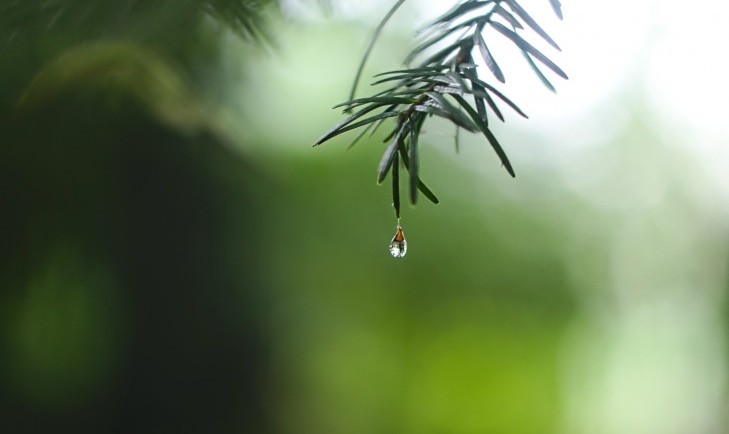
The Western Governors' Association keeps you updated on the latest news in the West. Here are the top stories for the week starting July 5, 2021. (Photos courtesy of Ed Leszczynskl and Blue Origin)
While Oregon Gov. Kate Brown and Washington Gov. Jay Inslee issued emergency wildfire declarations last week in response to historic heat waves, heavy rains elsewhere in the West have temporarily dampened fire danger and helped firefighters contain blazes.
In Colorado, cooler temperatures and ongoing rain showers have convinced local and federal fire officials to drop fire restrictions from Stage 2 to Stage 1 in the White River National Forest, where recent drought conditions and the Sylvan Lake Fire raised significant concerns. “Most of the forest has received enough rain to take the edge off,” David Boyd, public information officer for the White River National Forest, said. With showers and thunderstorms full of “abundant monsoon moisture” forecasted to continue well into July, Gila National Forest, Cibola National Forest and the National Grasslands in New Mexico also announced the lifting of fire restrictions.
After a difficult start to fire season, restrictions will stay in place in Arizona, but land managers determined that enough rain has fallen to end closures in all of its national forests that have been in place since June. Officials in Utah said that recent rainfall had reduced fire danger, especially from lightning strikes, but that more rain is needed to limit fire restrictions long-term. Similarly, storms and cooler weather in Wyoming helped hundreds of firefighters working the Robertson Draw and Crooked Creek fires, now 65% and 72% contained. But forest officials at both the Shoshone and Bighorn national forests have implemented Stage 1 fire restrictions based on vegetation measures. With additional rain, however, “our fire managers will continue to monitor conditions and if they improve, we will reassess the restrictions.”
MUSSLE DEFENSE: The number of boats infested with invasive mussels that Montana has stopped from entering The Treasure State’s waterways in 2021 has already surpassed last year’s number, which at the time was double any year on record. Invasive mussels pose risks to water, power and irrigation infrastructure as well as Montana’s outdoor recreation industry. Once they arrive, they're almost impossible to get rid of and can lead to billions of dollars in costs to contain them and deal with their impacts. Read how Western Governors are working to implement aquatic invasive species programs in coordination with the Department of Agriculture, Department of the Interior and the Army Corps of Engineers.
 SPACE RACE: A Pioneering aviator from New Mexico, Wally Funk, 82, is aiming to beat John Glenn's record as the oldest person to ever travel to space when she accompanies Jeff Bezos on the Blue Origin New Shepard suborbital rocket system on July 20. At just 21 years old, Funk was one of the famous "Mercury 13" — a group of women in the 1960s who made it through the "Women in Space" program that mirrored the rigorous physical and mental testing that NASA's male Mercury 7 astronauts endured. Many of the women excelled, with Funk scoring better than Glenn on some of the tests. When NASA subsequently rejected her request to become an astronaut, she said, “I didn't think that I would ever get to go up." Learn more about her impending flight in a video announcing her involvement in the mission.
SPACE RACE: A Pioneering aviator from New Mexico, Wally Funk, 82, is aiming to beat John Glenn's record as the oldest person to ever travel to space when she accompanies Jeff Bezos on the Blue Origin New Shepard suborbital rocket system on July 20. At just 21 years old, Funk was one of the famous "Mercury 13" — a group of women in the 1960s who made it through the "Women in Space" program that mirrored the rigorous physical and mental testing that NASA's male Mercury 7 astronauts endured. Many of the women excelled, with Funk scoring better than Glenn on some of the tests. When NASA subsequently rejected her request to become an astronaut, she said, “I didn't think that I would ever get to go up." Learn more about her impending flight in a video announcing her involvement in the mission.
BEAVERS TO THE RESCUE: Seven years ago, ecologists looking to restore a dried-out floodplain in Placer County, California faced a choice: spend at least $1 million bringing in heavy machines to revive habitat or try a new approach. Ultimately, they turned to nature’s original flood manager – the beaver – to do the work at a fraction of the cost. Today the floodplain is a thriving wetland that not only came back to life far faster than anticipated after the beavers began building dams, but that also retains water longer.
TWERKING BEES: Bumblebees may have declined in parts of the Lower 48, but the important pollinators are thriving in Alaska, even in the high Arctic. One reason? Bumblebees have evolved to handle the cold better than most insects by vibrating their muscles to generate body heat. "They are really good at twerking," Gemma Tarlach a senior editor and writer at Atlas Obscura, told Alaska Public Media.
Get the latest news about the West and its governors by following the Western Governors' Association on Twitter, Facebook and LinkedIn.
Check out our podcast, Out West, on Podbean, Spotify and Apple Podcasts